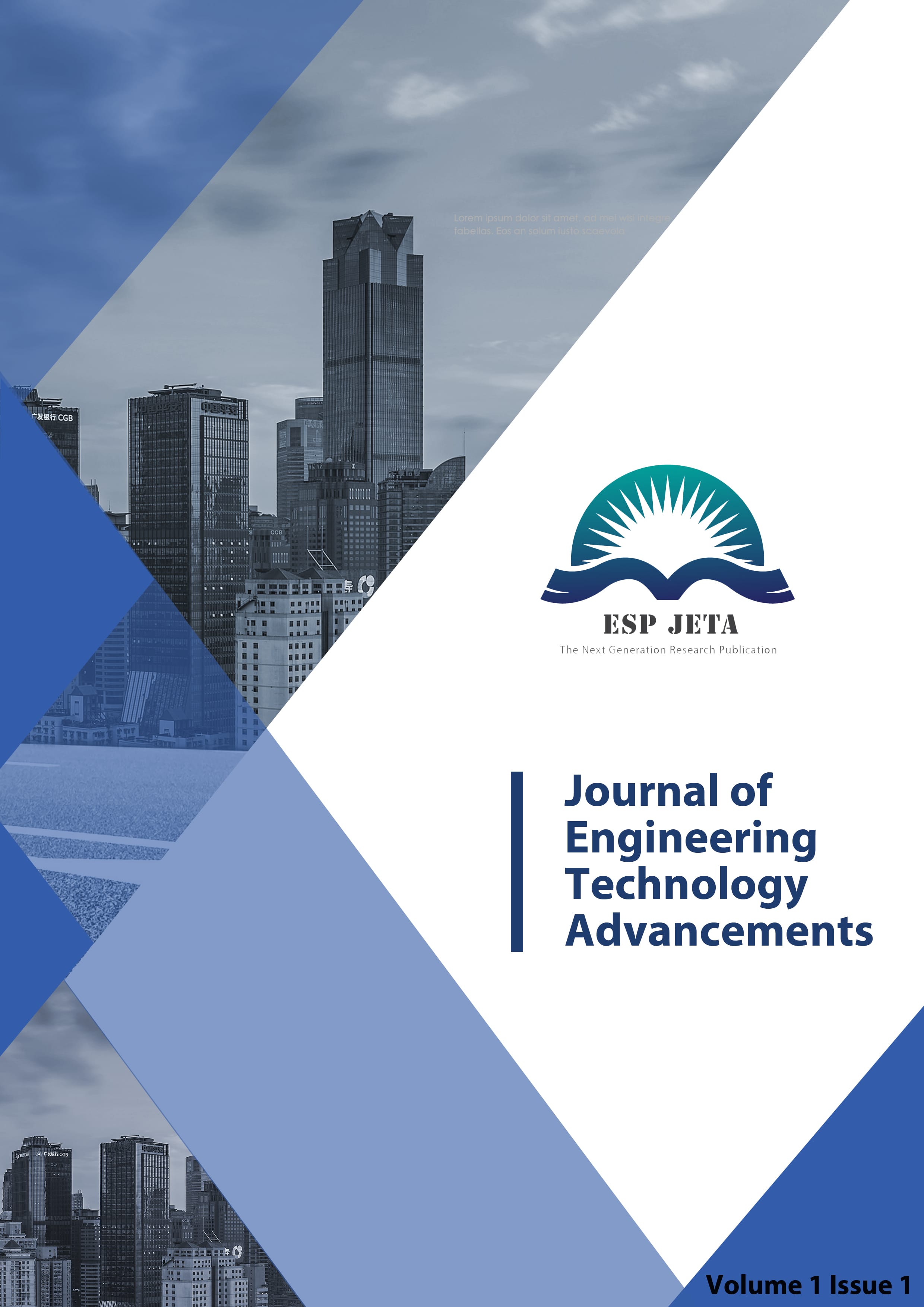Detailed Cost-Benefit Analysis of Geothermal HVAC Systems for Residential Applications: Assessing Economic and Performance Factors
| ESP Journal of Engineering & Technology Advancements |
| © 2021 by ESP JETA |
| Volume 1 Issue 2 |
| Year of Publication : 2021 |
| Authors : Ankitkumar Tejani, Jyoti Yadav, Vinay Toshniwal, Rashi Kandelwal |
 : 10.56472/25832646/ESP-V1I2P114 : 10.56472/25832646/ESP-V1I2P114 |
Citation:
Ankitkumar Tejani, Jyoti Yadav, Vinay Toshniwal, Rashi Kandelwal, 2021. "Detailed Cost-Benefit Analysis of Geothermal HVAC Systems for Residential Applications: Assessing Economic and Performance Factors", ESP Journal of Engineering & Technology Advancements, 1(2): 101-115.
Abstract:
The rapid advancement of wireless communication technologies necessitates innovative solutions to meet the growing demand for high data rates, reliability, and efficiency. This paper presents a novel AI-enhanced Multiple Input. Multiple Output (MIMO) communication system that leverages advanced machine learning techniques to optimize beam forming, channel estimation, and resource allocation. Our proposed system integrates deep learning models for dynamic spectrum management, ensuring efficient utilization of available spectrum and minimizing interference. The results demonstrate significant improvements in system performance, including increased data throughput, reduced latency, and enhanced robustness against channel impairments, highlighting the potential of AI to revolutionize MIMO communication.
References:
[1] Lund, J. W., & Freeston, D. H. (2001). “Worldwide Direct Uses of Geothermal Energy 2000.” Geothermics, 30(1), 29-68. doi:10.1016/S0375-6505(00)00047-0
[2] Omer, A. M. (2008). “Ground-source heat pumps systems and applications.” Renewable and Sustainable Energy Reviews, 12(2), 344-371. doi:10.1016/j.rser.2006.10.003
[3] Rybach, L., & Sanner, B. (2000). “Ground-source heat pump systems—The European experience.” GHC Bulletin, 21(1), 16-26.
[4] Chiasson, A., Rees, S. J., & Spitler, J. D. (2000). “A preliminary assessment of the effects of groundwater flow on closed-loop ground-source heat pump systems.” ASHRAE Transactions, 106(1), 380-393.
[5] Florides, G., & Kalogirou, S. (2007). “Ground heat exchangers—A review of systems, models and applications.” Renewable Energy, 32(15), 2461-2478. doi:10.1016/j.renene.2006.12.014
[6] Sanner, B. (2001). “Shallow Geothermal Energy.” Geothermal Training Programme, Reports, 15, 1-8.
[7] Hepbasli, A., & Kalinci, Y. (2009). “A review of heat pump water heating systems.” Renewable and Sustainable Energy Reviews, 13(6-7), 1211-1229. doi:10.1016/j.rser.2008.08.002
[8] Self, S. J., Reddy, B. V., & Rosen, M. A. (2013). “Geothermal heat pump systems: Status review and comparison with other heating options.” Applied Energy, 101, 341-348. doi:10.1016/j.apenergy.2012.01.048
[9] Lund, J. W., Freeston, D. H., & Boyd, T. L. (2010). “Direct utilization of geothermal energy 2010 worldwide review.” Geothermics, 39(3), 189-214. doi:10.1016/j.geothermics.2010.03.002
[10] Bloomquist, R. G. (2003). “Geothermal Heat Pumps: Four Plus Decades of Experience.” GHC Bulletin, 24(4), 1-6.
[11] Curtis, R., Lund, J., Sanner, B., Rybach, L., & Hellström, G. (2005). “Ground Source Heat Pumps—Geothermal Energy for Anyone, Anywhere: Current Worldwide Activity.” Geo-Heat Center Quarterly Bulletin, 26(3), 1-6.
[12] Younger, P. L. (2008). Ground-coupled heating-cooling systems in urban areas: how sustainable are they?. Bulletin of science, technology & society, 28(2), 174-182.
[13] Tim Stobierski, How to Do a Cost-Benefit Analysis & Why It’s Important, online. https://online.hbs.edu/blog/post/cost-benefit-analysis
[14] Afram, A., & Janabi-Sharifi, F. (2014). Review of modeling methods for HVAC systems. Applied thermal engineering, 67(1-2), 507-519.
[15] Mishan, E. J., & Quah, E. (2020). Cost-benefit analysis. Routledge.
[16] Bertani, R. (2009, May). Geothermal energy: an overview on resources and potential. In Proceedings of the international conference on national development of geothermal energy use, Slovakia.
[17] Soltani, M., Kashkooli, F. M., Dehghani-Sanij, A. R., Kazemi, A. R., Bordbar, N., Farshchi, M. J., ... & Dusseault, M. B. (2019). A comprehensive study of geothermal heating and cooling systems. Sustainable Cities and Society, 44, 793-818.
[18] Lyu, W., Li, X., Yan, S., & Jiang, S. (2020). Utilizing shallow geothermal energy to develop an energy efficient HVAC system. Renewable Energy, 147, 672-682.
[19] Welsch, B., Rühaak, W., Schulte, D. O., Formhals, J., Bär, K., & Sass, I. (2017). Co-simulation of geothermal applications and HVAC systems. Energy Procedia, 125, 345-352.
[20] Nour, M., Hosny, O., & Elhakeem, A. (2012). A BIM based energy and lifecycle cost analysis/optimization approach. International Journal of Engineering Research and Applications, 2(6), 411-418.
[21] Ankitkumar Tejani, 2021. "Assessing the Efficiency of Heat Pumps in Cold Climates: A Study Focused on Performance Metrics", ESP Journal of Engineering & Technology Advancements 1(1): 47-56.
[22] Ankitkumar Tejani, 2021. "Integrating Energy-Efficient HVAC Systems into Historical Buildings: Challenges and Solutions for Balancing Preservation and Modernization", ESP Journal of Engineering & Technology Advancements 1(1): 83-97.
Keywords:
Geothermal Hvac, Cost-Benefit Analysis, Residential Applications, Energy Efficiency, Lifecycle Cost, Environmental Impact.


